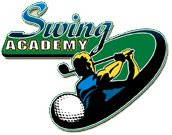Barefoot Resort has a new golf school headed by Alasdair Dyer and Will Schatz, and Nick Bradley is no longer professionally affiliated with the four-course facility.
Bradley, the swing coach for Englishman Justin Rose, the 19th-ranked player in the Official World Golf Ranking, is engrossed in his work with Rose and writing his second book, a follow-up to "The 7 Laws of the Golf Swing." The new book should be available for purchase by December.
He remains a resident of the Grand Strand, however. His wife and son live in a house in Sunset Beach, N.C., and he also has a condo at Myrtle Beach National. "I'm delighted that Alasdair has the opportunity and I wish him the best of luck," said Bradley, who hired Dyer to work with him at Barefoot from England.

Dyer said the Dyer & Schatz Academy of Golf has a three-year lease agreement with Barefoot. Schatz is a Grand Strand Professional Golf Tour player and part-owner who is foraying into teaching.
The Barefoot practice facility consists of a 30-acre driving range, pizza parlor and bar, and a Golf Dimensions retail store that offers extensive club and equipment testing and has certified club-fitters on site. Dyer and Schatz also fit students for clubs.
Barefoot also has a number of rental condos and villas through Premier Resorts that can house academy students. "It's a No. 1 place to stay, has the best practice facility and a group of four of the best golf courses in the area," Dyer said. "Why would you go anywhere else? That's what I'm hoping people will realize."
The new golf school has a fitness director in Bob Forman, the director at a medical fitness center in Greensboro, N.C., and mental coach in Dr. Jim E. Bordieri, a professor of clinical psychology at Southern Illinois University.
Both Forman and Bordieri are members at Barefoot Resort, and Dyer said they'll be included in the curriculum during occasional all-encompassing weekend golf schools.
"I have some out-of-the-box ideas for golf schools," Dyer said. "It will be a 48-hour intensive workout. I think here we've got the facility to do it."
Dyer is also considering a singles golf school, and cites the amount of interest in social Web sites such as E Harmony for evidence it might work. "Why not try to put them in a scene where they each have a mutual interest," he said. "Nobody else does it. Find love through me. I'll be a matchmaker."
Dyer's pupils include Kevin Streelman, a second-year PGA Tour member who he works with about three days a month, and Duramed Futures Tour member Katie Allison of Little River, who also teaches at the academy. Dyer said Allison will play at least the first half of the season and see if her play and financial situation warrant more tournaments.
Dyer's others students include mini-tour player Lee Williams of Alabama, Futures Tour member Christina Tucker and Virada Nirapathpongporn, who has a lot of promise but is rehabbing a shoulder injury.


